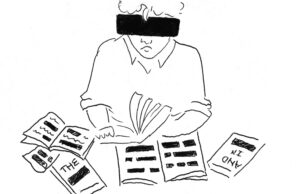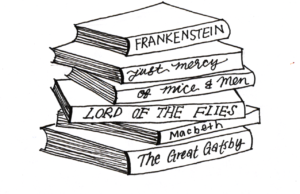Halting the production of Dr. Seuss books is a step in the right direction
Racial prejudice and stereotypes were excused and a part of everyday life in the early 20th century. An example of this racial inaccuracy are select Dr. Seuss books; as of March 2, six of Dr. Seuss’s books are halting publication, helping to stop propagating these harmful ideas. The halting of publication of these books is a step in the right direction, trying to reverse the hatred and stereotypes of the 20th century. Even though these measures will not erase what the books said, they will help lessen the situation of racism, limiting the hatred that is put out in the world.
Dr. Seuss Enterprise, a company devoted to further publishing the late Theodor Seuss Geisel’s books, announced their decision to stop producing the six books with a statement. “Dr. Seuss Enterprises celebrates reading and also our mission of supporting all children and families with messages of hope, inspiration, inclusion, and friendship,” they said. With this, they announced their list of books that will cease to be published and licensed: “And to Think That I Saw It on Mulberry Street,” “If I Ran the Zoo,” “McElligot’s Pool,” “On Beyond Zebra!”, “Scrambled Eggs Super!” and “The Cat’s Quizzer.” “These books portray people in ways that are hurtful and wrong,” Dr. Seuss Enterprise said. These actions from the Seuss Enterprise are great, and hopefully other businesses will follow in their footsteps and stop any wrong messages or images that are being spread.
Even though the reasoning for the book’s cancellation wasn’t explicitly said, except for saying the books portray people in wrong ways, it is not a surprise that the books are being cancelled. In “And to Think That I Saw It on Mulberry Street”, a Chinese boy is portrayed wearing a cone-like hat and eating with chopsticks. The caption also states, “A Chinese boy Who eats with sticks.” “If I Ran the Zoo” also included stereotypical images of many people of color, including two African men appearing to wear grass skirts with their hair tied above their heads. “The Cat’s Quizzer” has an illustration of a yellow colored figure wearing a conical hat with the caption, “how old do you have to be to be a Japanese?” The other books have illustrations or captions along these lines, further reinforcing the Seuss Enterprise’s decision to stop publishing these books. These illustrations along with the captions are trying to stereotype whole races into one image.
The Seuss Enterprises continues to work to preserve Dr. Seuss’s work and legacy in a positive light. Their discontinuation of Dr. Seuss books may continue, with Dr. Seuss’s most popular book, “The Cat in the Hat,” attracting some criticism. This criticism is based on the Cat in the story being black and the interpretation that his main purpose is to threaten the stability of a white household and disrupt the white family’s social order. Dr. Seuss Enterprise is making sure that Seuss’s legacy is upheld, monitoring Seuss’ entire portfolio and working to ensure that inappropriate messages are not continuing to be propagated. Hopefully, more books that advocate wrong images and messages will stop production, and the halting of publication of these six books is making a lot of progress in the right direction.



